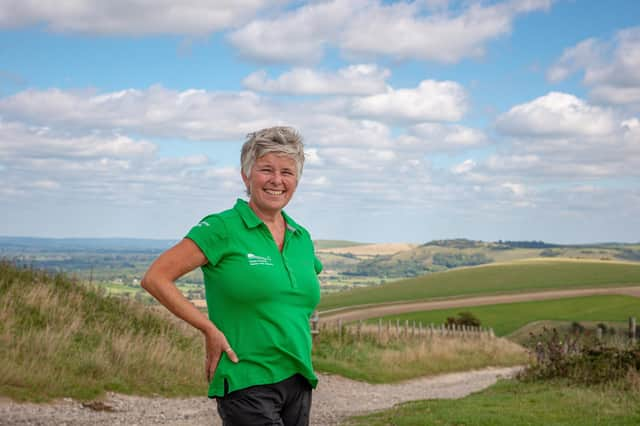Five ways to improve your mental health – by connecting with nature


Anxiety is the theme of this year’s Mental Health Awareness Week (May 15-21) - and the South Downs National Park can help to manage that by connecting with nature.
Kate Drake, Health and Wellbeing Officer at the park, believes there are five pathways that can help boost your mental health.
Advertisement
Hide AdAdvertisement
Hide AdHer advice comes as the National Park Authority continues to forge ahead with its Health and Wellbeing Strategy, launched three years ago with the aim of connecting more people with the park as a ‘natural health service’ for the area.
Kate said: ‘Anxiety is one of the most common mental health issues and is a natural human response when we feel that we are under threat – almost like our own internal ‘alarm’ system.
‘A recent mental health survey by the Mental Health Foundation showed that a quarter of adults surveyed said they felt so anxious that it stopped them from doing the things they want to do some or all of the time.
‘Sixty per cent of the adult population feel this way at least some of the time.
Advertisement
Hide AdAdvertisement
Hide Ad‘Yet, on a positive note, anxiety can be made easier to manage and connecting with nature is one of simplest, most enjoyable and rewarding ways to help tackle the issue.
Kate’s five pathways to nature connectedness are:
Senses: Go into your garden or local park and listen to the sound of birds; Listen to the sound of the sea or the trickling of a stream; Take a stroll through a green space and notice what you can see, hear, smell and touch (taste may be a bit more difficult!) Focus only on the present moment, not the past or future (phone on silent and in your pocket can help).
Emotion: Feel alive through the emotions and feelings nature brings.
Ideas include:
Go for a walk, run or cycle on one of the 3,300km public footpaths in the SDNP and breathe deeply. Exercise is known to release feel-good hormones such as serotonin.
Advertisement
Hide AdAdvertisement
Hide AdForest bathe – spend an hour or so in peaceful woodland and notice how your sense of urgency diminishes and calmness develops. Did you know that almost 25 per cent of the SDNP is covered by woodland?
Beauty: Head to a stunning location and soak up the picturesque views, such as St Catherine’s Hill, Butser Hill, Devil’s Dyke, Kingley Vale or Ditchling Beacon.
Head to one of the park’s many chalk grassland or heathland sites and look to see how many butterflies and birds you can see.
Meaning: Nature brings meaning to our lives.
Tips include: Incorporate a walk in nature at least once a week; Keep a nature diary and jot down things you see and how you feel; Take photographs of wildlife and frame your best ones; Go for a walk with family or friends in nature.
Advertisement
Hide AdAdvertisement
Hide AdCompassion: Ideas include: Micro-volunteering, such as a litter pick or taking part in a wildlife survey; Help wildlife by planting wildflowers, keeping a “wilder” area of your garden, or creating a mini-pond in your garden; recycling, buying local where possible and using less water.
Helping people with anxiety by connecting with green spaces is just one aspect of Kate’s work.
Over the past three years the SDNP has got more heavily involved in green social prescribing, which supports people’s non-clinical needs and focuses on their social needs and wellbeing by referring them to activities that take place in nature.
Current projects include:
Timescape – supporting people to have a relationship with nature and cultural heritage through making and creating at Amberley Museum and Butser Ancient Farm.
Advertisement
Hide AdAdvertisement
Hide AdCarers in Nature – supporting carers to connect to nature, each other and provide respite through mindful walks.
*Mental illness accounts for 23 per cent of all ill-health in England and affects more than one in four of the population at any time. With over 50 per cent of the population living within one hour’s travel of a National Park, the parks can help improve health and wellbeing objectives.
The South Downs National Park has a population of 117,000 and 2.2m people live within 10km of its boundary.
The five pathways of nature connection are based on the research of Professor Miles Richardson, from the University of Derby.